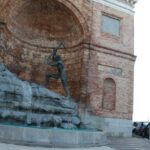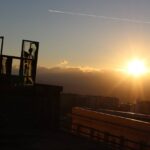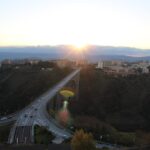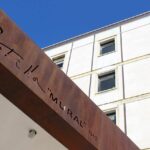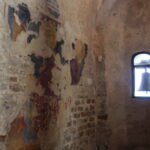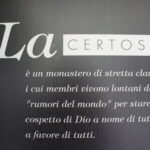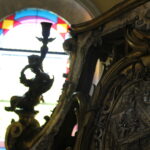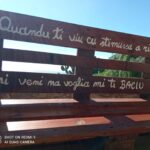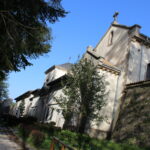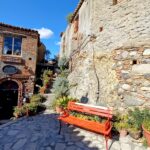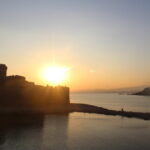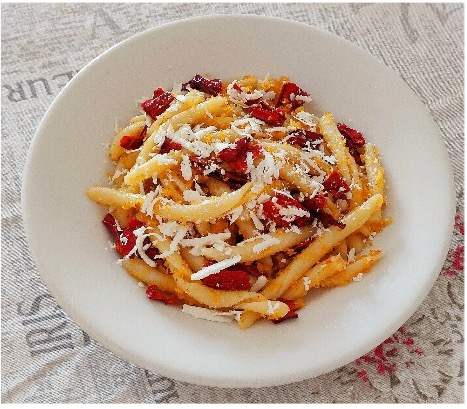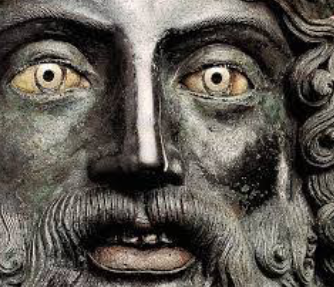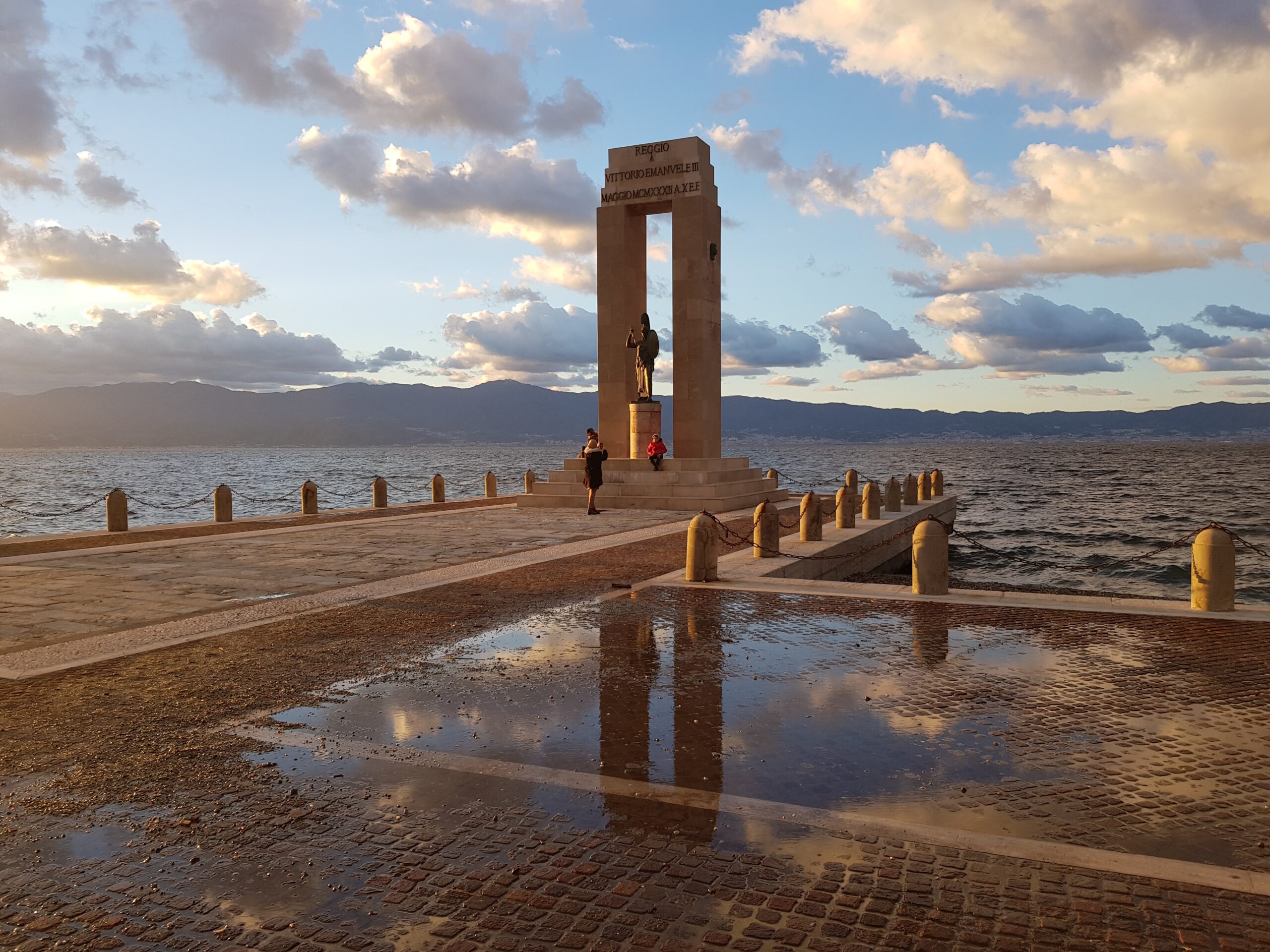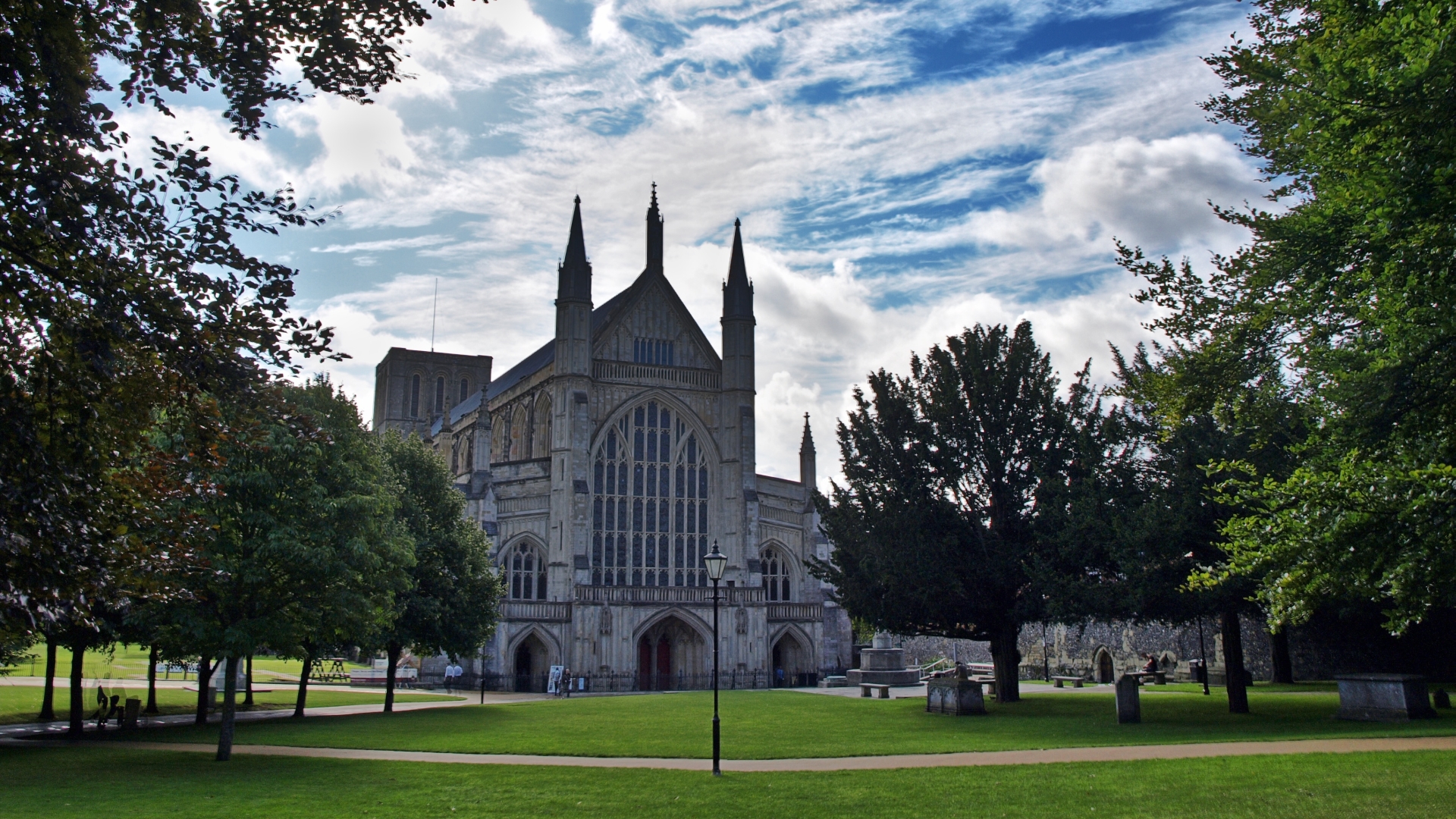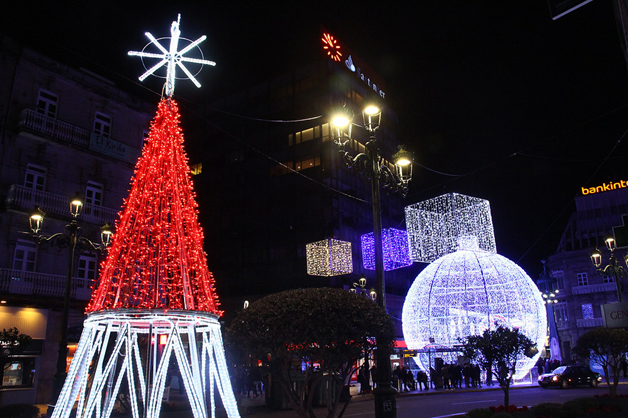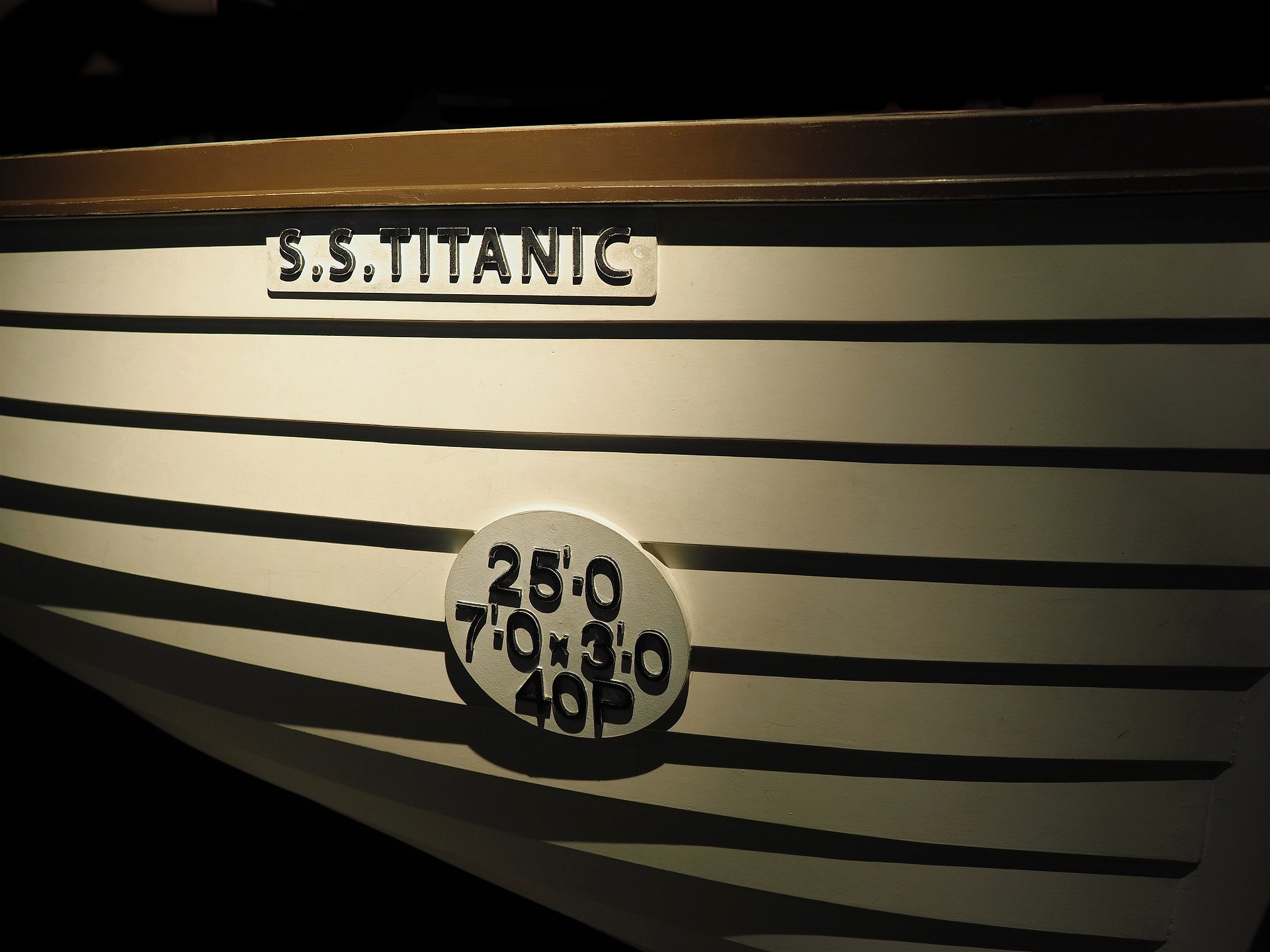Italy - Calabria - Associazione JUMP Gioventù in riSalto
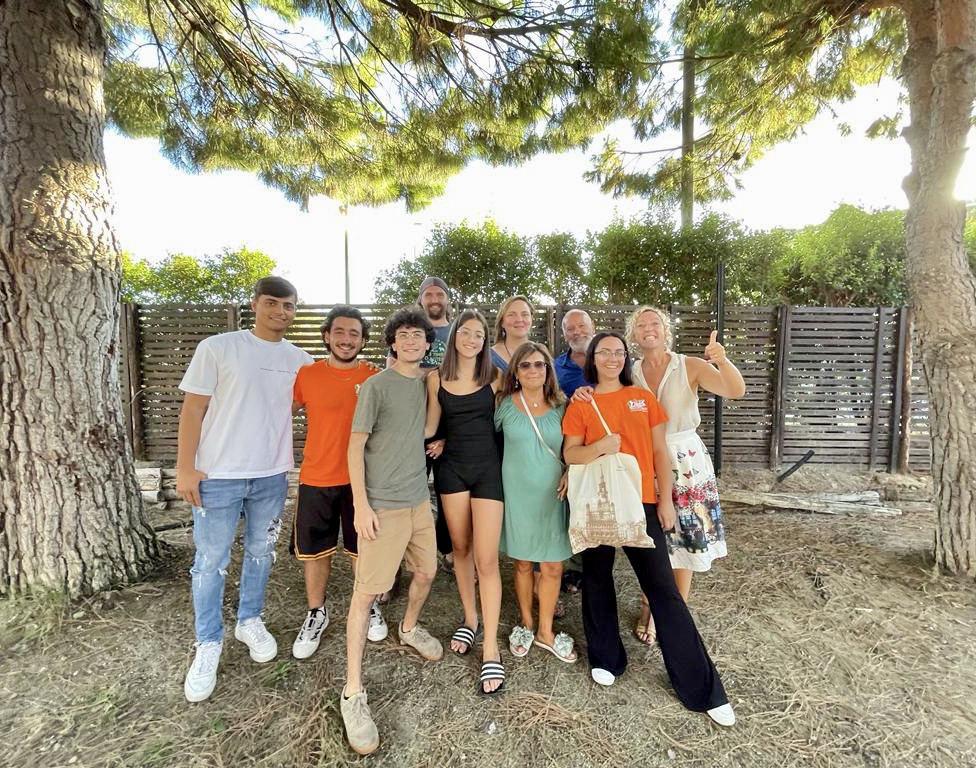
Calabria is at the toe of the boot, the extreme south of Italy – lapped by the splendid crystal blue Ionian and Tyrrhenian Seas and separated from Sicily by the Strait of Messina. The warm climate, the beautiful colours of the sea, rocky coasts that alternate with sandy beaches, a nature that is wild and mysterious, the strong and genuine flavours of local food and the vestiges of its ancient origins make Calabria a unique place that vacationers can enjoy in both winter and summer.
The province of Catanzaro
The city of Catanzaro, capital of the region and the place where it was born the name “Italia”.

Around 1500 BC a tribe called the Oenotri (“vine-cultivators”), settled in the region. According to Greek mythology, they were Greeks who were led to the region by their king, Oenotrus. The Greeks used the term ‘italoi’, which according to some ancient Greek writers was derived from a legendary king of the Oenotri, Italus and according to others from the bull. Originally the Greeks used ‘italoi’ to indicate Calabrians and later it became synonymous with the rest of the peninsula. Calabria therefore was the first region to be called Italia (Italy.
Calabria is universally recognised as the heart of Magna Graecia, identifying with this expression that very important phase of Greek colonisation of Southern Italy that began in the 8th century BC. The Greek cities, mostly independent of each other, were looking for new lands to occupy at that time, both to escape the many internal political frictions and to improve their economic activities based on agricultural production and trade. Southern Italy and Calabria in particular were ideal for these purposes, thanks to the mild climate, the abundance of water and the peninsular shape of the land, which allowed easy travel by sea.
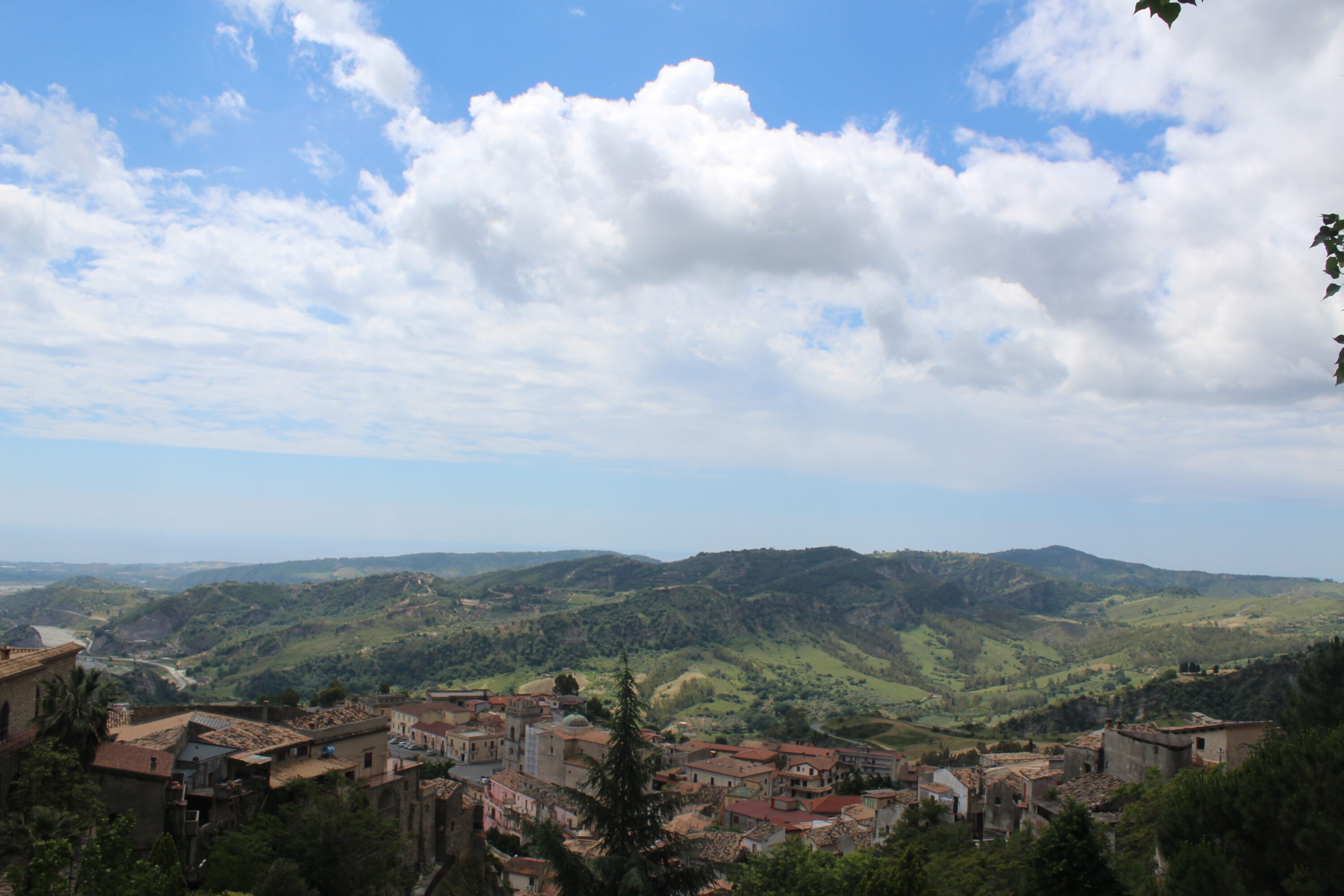
The Greeks were certainly not the first to colonise Calabria, but their colonies were completely different from the previous ones: the Greeks did not create anonymous warehouses of goods, leaving a few soldiers to guard them, but they settled in the new lands, creating urban centres according to their customs and which had never been known before in Italy. The Greek colonies developed so rapidly that they not only equalled but even surpassed the mother country in terms of culture and wealth, earning them the name ‘Magna Graecia’.
Between 740 and 690 B.C., Rhegion (Reggio Calabria) was founded by the Chalcidese, Sybaris (Sibari) and Kroton (Crotone) by the Achaeans and finally Lokroi Epizephyroi (Locri) by settlers from the ancient Greek region known as Locride. The location of these cities was indicated, according to tradition, by the Oracle of Delphi, through which the God Apollo was questioned by the leaders of the expeditions. In any case, whatever the truth of the matter, one cannot fail to notice a certain common sense in choosing settlement areas that were quite far from each other. The Greek cities of the Motherland, in fact, had amply demonstrated that two ‘poleis’ in close contact with each other always ended up at war with each other.
This was also confirmed in Calabria, where Croton attacked and destroyed Sybaris: in the meantime, however, the level of civilisation achieved by these cities was unparalleled in history. The three Ionian cities, Sybaris, Croton and Locri, wanted to consolidate their presence by expanding into the interior and onto the Tyrrhenian coast and founding sub-colonies. Remaining only in the Calabrian territories, the Sybarites founded Laos and Skydros (cities that are difficult to identify, but which are located on today’s Tyrrhenian coast of Cosenza), the Crotonians founded, among others, Temese, Terina, Skylletion (today Roccelletta di Borgia) and probably also Kaulon (today Punta Stilo near Monasterace Marina), while the Locrians founded Hipponion (Vibo Valentia), Métauros (Gioia Tauro) and Medma (Rosarno).
The Regginians, on the other hand, except for a probable collaboration in the foundation of Métauros, did not have an expansionist vocation: Rhegion, thanks to its strategic position on the Strait, greatly enhanced its trade, assuming a leadership in this field that remained unequalled for centuries.

The “poleis” of Magna Graecia took over the administrative organisation of the mother country, thus giving rise to the famous city-states that brought a democratic regime to Calabria for the first time: these institutions were defended by a first-rate military apparatus, based above all on a large fleet of warships. The sea was also a perfect communication route for trade both with the Motherland and with other Mediterranean peoples. Everything was traded, from foodstuffs (especially cereals) to raw materials (wood and marble), from handicrafts to works of art (think of the Riace Bronzes, for example).
Culture was probably the pride of Magna Graecia: every city had at least one library and several centres for the study of the arts, philosophy, engineering and medicine. We need only think of figures such as Pythagoras, Philip of Medma (Plato’s private secretary), Nossis (a Locrian poetess) and the doctor Alcmeon, founder, along with Hippocrates, of modern medicine, who was the first to realise that the brain had a control function over the body.
In addition to the sciences and the arts, sport was also a field of excellence for the cities of Magna Graecia in Calabria: for example, the boxer Milone from Crotone, who still holds the record for winning five Olympic gold medals in five different competitions. Crotonian athletes were celebrated as deities in Calabria, and there was ample reason for this: of all the editions of the Olympic Games in Antiquity, Kroton won more medals than Athens and all the other great Greek and Magna Graecia cities, surrendering only to the might of Sparta.
Calabria and what it still exists below about our past - amazing archeological sites

Most of the archaeological heritage of Calabria, which dates back to the first Greek colonies, is collected in the 4 following large archaeological parks situated in Locri: Capo Colonna, Roccelletta of Borgia and Sybaris, here, which is the only case in the Mediterranean, three different ages overlap. The whole region is rich in findings but only a part of them have been discovered.
Sybaris
Founded around the years 730-720 BC by Achaean populations
Sybaris was, with Kroton and Taranto, one of the largest cities of Ancient Greece
Today the layered remains of three ancient cities, Sybaris, Thourioi and the Roman Copia , which emerged during the excavations of Sybaris Archaeological Park are a unique example in the whole Western world.
Attached to the Sybaris Archaeological Park which opened in 1996, is the new National Archaeological Museum of Sybaris, it is the main cultural and historical centre of the Ionian coast of the province of Cosenza. It exhibits the most important finds from the surrounding area, including those of the pre-colonial sites of Francavilla Marittima and Castiglione of Paludi.
Kroton
Kroton was an ancient and powerful Achaean colony of the 6th century BC, surrounded by nearly 20 kilometres of fortified walls and defended by an army of over 150,000 men, it was the seat of the Pythagorean philosophical school, of the medical school – that was considered the best one of the entire ancient world – and of the gymnastic school.
Ten kilometres to the south of Crotone, on the promontory of Capo Colonna, stands the Archaeological Park that bears the same name: the 30 hectares of land used for excavations, the 20 hectares of woods and the Mediterranean bush have rendered it one of the most sacred areas of the entire Mediterranean basin. At Capo Colonna, in fact, was erected the majestic sanctuary dedicated to Hera Lacinia, wife and sister of Zeus, protector of pastures, women, female fertility, family and marriage.
The new Archaeological Museum collects artefacts found in the excavation area; remains of the pre-colonial era are displayed in Antiquarium di Torre Nao, located within the park. In the best-equipped National Archaeological Museum of Crotone are collected the first findings of the Archaic period and the precious treasure of Hera.
The remains of the ancient Greek city of Skilletion, which later on became a Roman colony with the name of Scolacium, are evident in the Archaeological Park that bears the same name and was founded in 1982 with the attached Antiquarium of Roccelletta. In the Park of great interest and beauty are the ruins of Santa Maria della Roccella, the amphitheater of the 2nd century AD that completed the ancient Scolacium, three thermal plants, a necropolis and the aqueduct, which were identified by preliminary researches carried out on the hill overlooking the area.

Hippion
At four kilometers from the coast, on a small hill located at just about 500 meters above sea level, enclosed by the modern town of Vibo Valentia, are the remains of ancient Hipponion built near the previous indigenous centre called Veipo. Hipponion, the colony of Locri Epizefiri was founded in the late 7th century BC along with Medma in order to acquire new arable lands and have an access to the Tyrrhenian Sea. In the halls of the Norman castle, the Archaeological Museum was set up, it houses the findings from the excavations of the Greek city. The ancient colony of Lokroi Epizephyrioi was founded shortly after the birth of Kroton in 709 BC.
Among the most important cities of Magna Grecia was Locri Epizefiri, the birthplace of Zaleuco, author of the first code of laws and related penalties, and Nosside, a follower of Sappho and a major poetess of Ancient Greece. The Archaeological Park is located about 4 km from today’s Locri. The town’s entrance is directly accessible from the 106 Ionica highway.
Scolacium Archeological Park: A Beautiful Stroll Through History
Immersed in a centuries-old olive grove overlooking the Ionian Sea, the Scolacium Archeological Park tells many stories. Time doesn’t stop, it overlaps, and the visitor is able to step back thousands of years to trace the development of this unique site and its people all in an afternoon.
Just in Calabria you can see the unique “Codex Purpureus”

Codex Purpureus is an illuminated Greek evangeliary containing the whole Gospel of Matthew, almost all the gospel of Mark, of which only verses 15- 20 are missing , and a part of Eusebio’s letter to Copiano about the concordance of the gospels. It is an anonymous text( the authors are unknown) and mutilated . Of the original 400 sheets , only 188 of decorated parchment dyed in purple remain . The handwriting in which it is written is the capital Biblical or Greek uncial , with words in scriptio continua ( with no separation of the letters ), without accents, breathings, punctuation marks, except for the full stop- punctum, which marks the passing from a period to the other.
The text is distributed on two columns of twenty lines , the first three of which , making up the incipit of the Gospels, have the characters in gold, while the rest is in silver. The illuminations kept in the codex are fifteen. Twelve of them (I,II, II, IV, V, VI, VII, X, XI, XII, XIII), represent episodes of the life of Christ, one reproduces the Canon of concordance of the Evangelists (IX), while the last is a portrait of Mark.
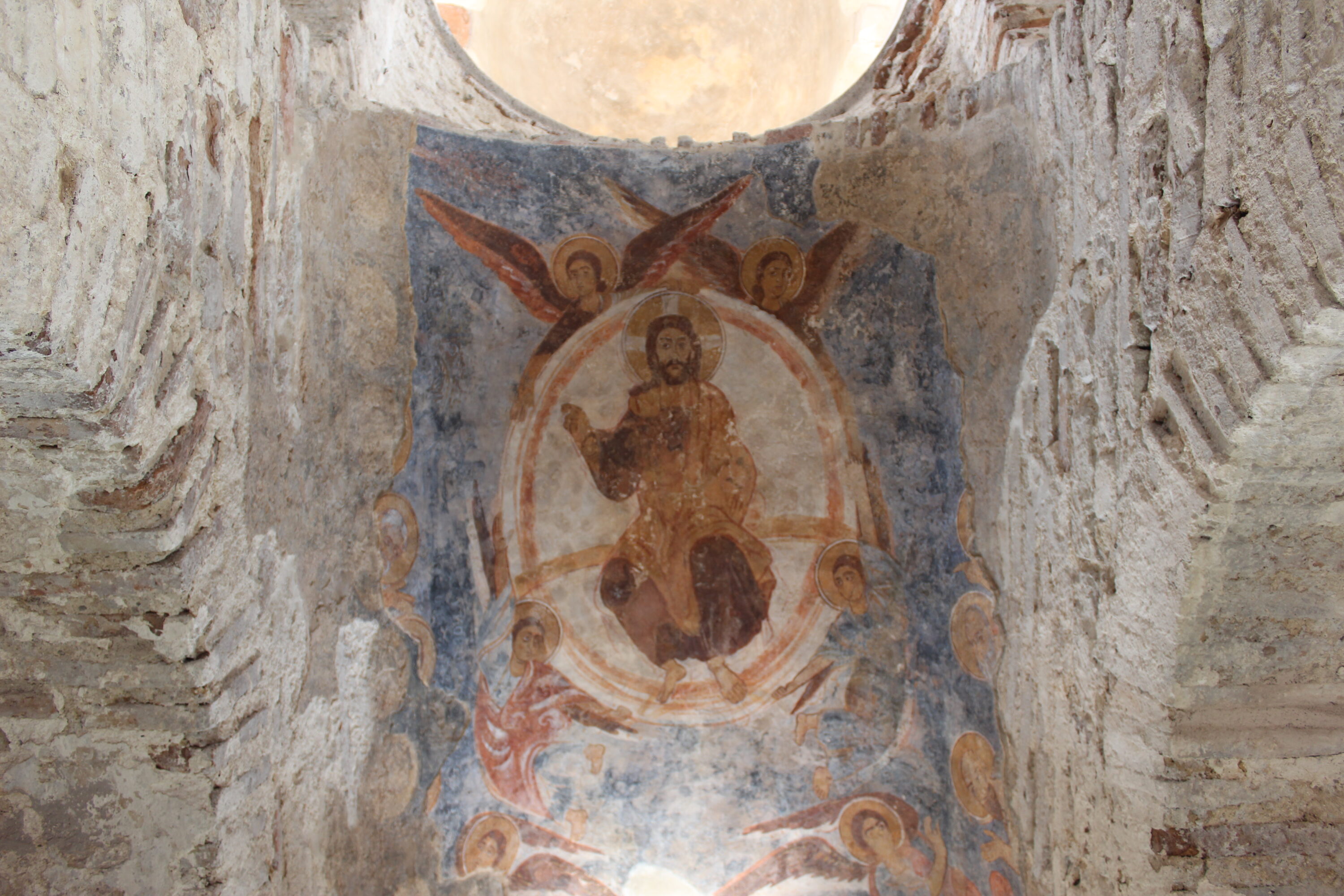
There are no elements to establish with certainty the dating of the Codex Purpureus , the place in which it was made and the identity of the person who brought it to Rossano.
Most of the experts, basing themselves on the style of the manuscript, for the dating, agree on a period between the IV and the VI-VII. century. The most substantiated century is the VI. From the comparison with other two artefacts of the same period , of uncertain location, we can deduce that probably the Codex was made in Syria, maybe in Antioch. It is assumed that the migratory wave of the Eastern Greek monks of the VII c. , because of the first iconoclasm, led to Rossano, a group of monks who kept the Holy Text. But also a noble aristocrat might have brought it to Rossano from the court of Byzantium.
The text was mentioned for the first time in 1846 by journalist Cesare Malpica and was scientifically studied in 1879 by the German Oscar von Gebhardt and Adolf Harnack, who submitted it to the attention of international culture. The Codex Purpureus Rossanensis is in the list of the nominations to be recognized by Unesco among the excellent properties of the world artistic heritage.
Soverato where JUMP is based
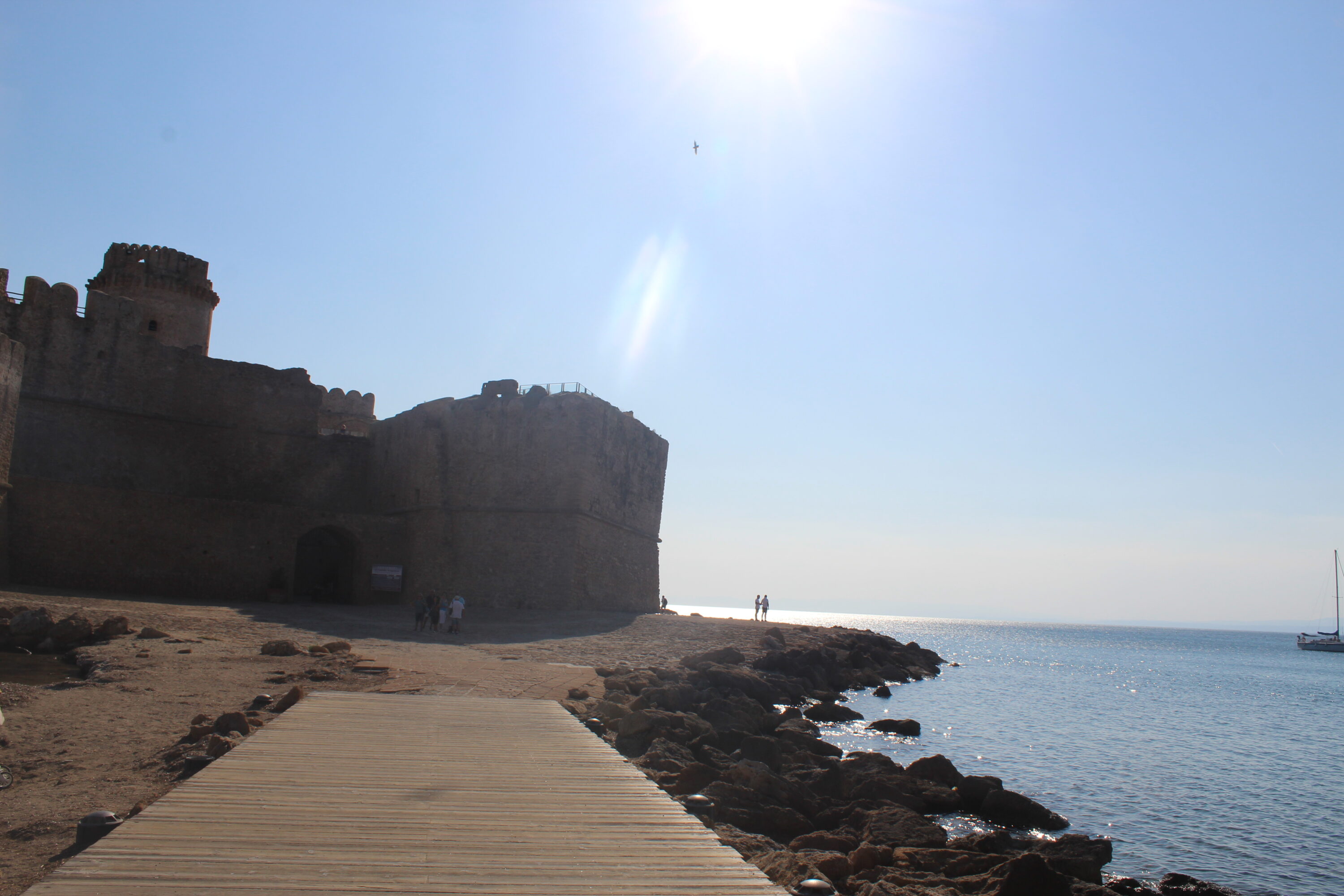
The area around Soverato is characterised by many places and archeological sites where you can find the footprints of Greeks and Romans, where the second ones didn’t destroy and changed.
The remains of small burial caves – dating back to the “Siculo” age (eighth century b.C.) – suggest that Soverato has a very ancient origin. When the Greeks disembarked on the Calabrian Ionian Coast, Soverato was under the dominion of Skylletion. The settlers founded a new village and they gave it the name “Poliporto” (from the greek term “polis-portos”). This name denoted the audacious predisposition to the maritime trade that exploded during the “Roman” period. The seaside village remained standing until the Saracen raids (9th and 10th centuries), which induced the inhabitants of the place to move behind the hill, where Suberatum, the present Soverato Superiore, was raised.
If we say “Soverato” we spontaneously evoke the sea. A natural association, immediate, that summarizes (in part) the essence of a small village linked to the sea that surrounds it, the sea of Magna Graecia. Those blue and deep waters, a theater in the past of stories of myths and legends, as well as abode of the sea little horse, an accidental symbol of Soverato. And the same blue crystal sea attracts thousands of visitors & tourists, always ready to enjoy all the beauties of the famous “Perla dello Ionio”.
Don’t miss the Church of “Maria Santissima Addolorata” which houses the famous statue “La Pietà del Gagini”, an interesting marble sculpture of Carrara made in 1521 by the artist Antonello Gagini.
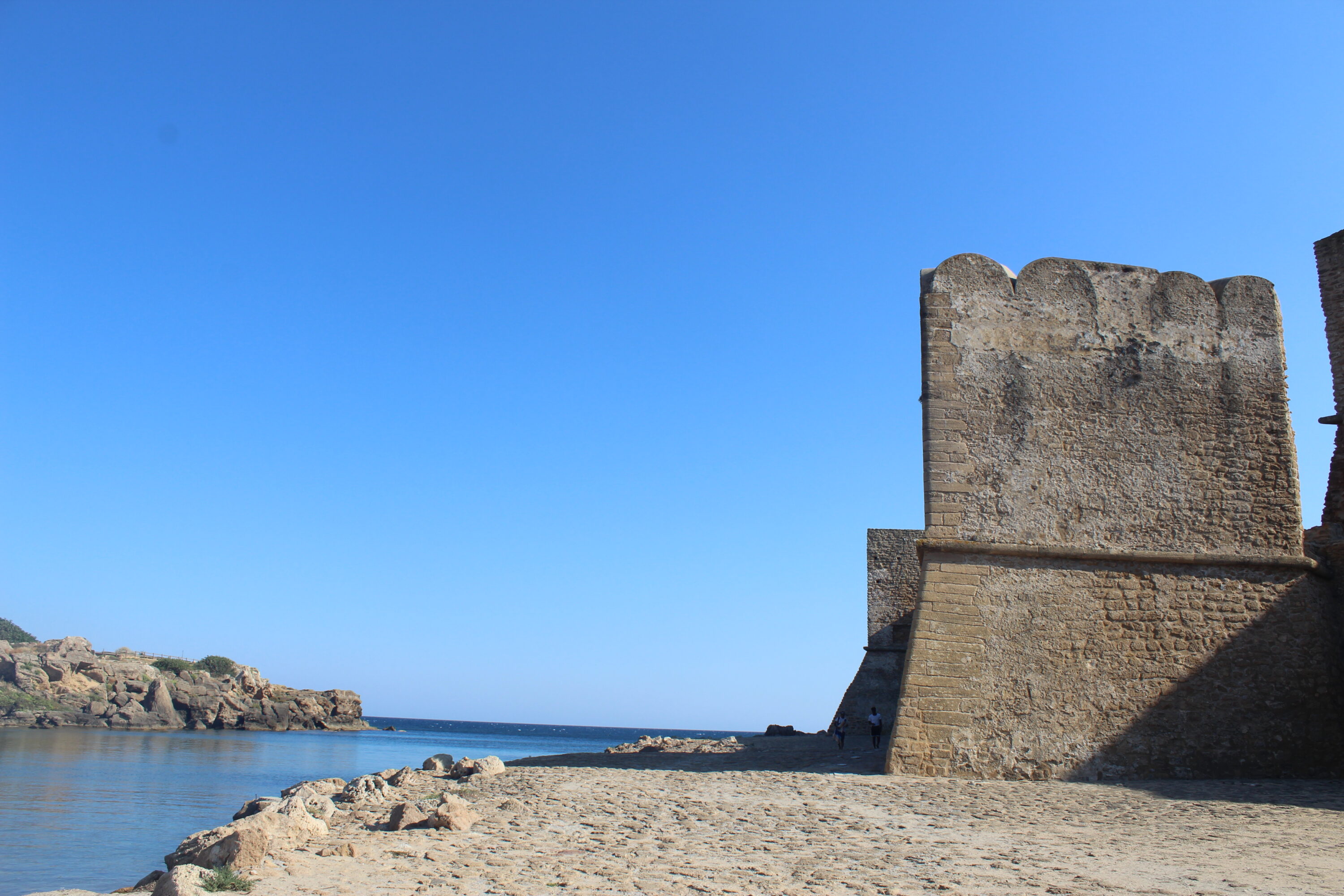
The actual connection between the Calabrian dialect, Latin and old Greek

The primary roots of the dialects is Latin. Southern and Central Calabrian dialects are strongly influenced by a Greek substratum and ensuing levels of Latin influence and other external Southern Italian superstrata, in part hindered by geography, resulted in the many local variations found between the idioms of Calabria. Nonetheless, the dialects have some influence from other languages, thanks to the periodic rule and influx of other cultures. As a result, French, Occitan and Spanish have left an imprint.
As said, our area is called the “Magna Grecia”. The Greek Mythology is full of stories related to life, battles and love stories connected with our land and many words are still used now by local people, crossing dialects of the different areas.
From the kindergarten kids start to learn English, from the middle school level they start to study a third language which is Spanish. At the secondary school there are 2 branches: linguistic lyceum and human sciences lyceum. The secondary school is based on a 5 years cycle. 2 years is a more common program than students decide. At the linguistic lyceum they also study Chinese apart from English and Spanish. In general at national level, in the Norths secondary schools prefer to teach German. In the South the connection with Spanish is still alive and more open. It’s easier for students of the South to learn Spanish. This doesn’t mean as it’s used to be said that the Spanish language is easier than German and Language. It depends on historical factors and cultural factors. In the past Calabria belonged to the Rein of “Two Sicilies” under the Spanish domination (right before the unification of Italy in 1861). From the other side, in the North of Italy, there are more commercial connections with Germany and business. From the cultural perspective, the Calabria lifestyle is more similar to the Spanish lifestyle. We would say that, in specific, more with the North side of Spain than with the South of Spain, more touristically exploited and famous.

